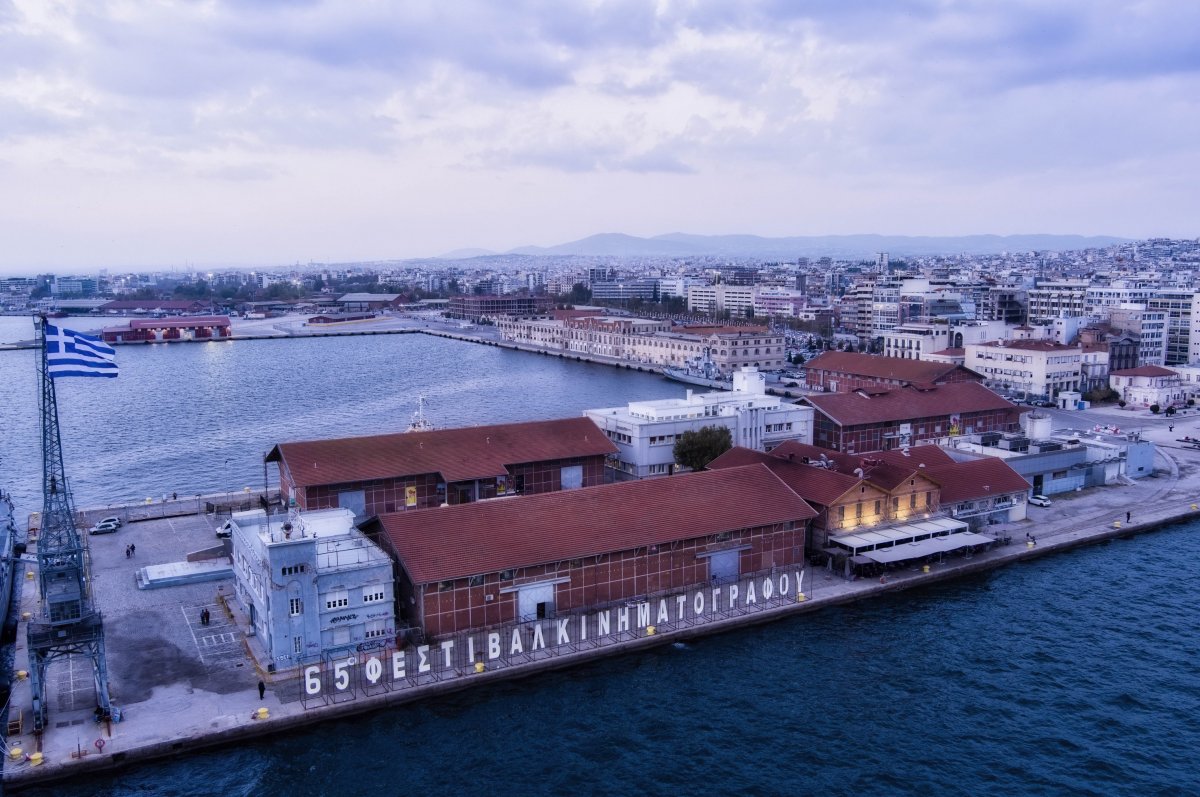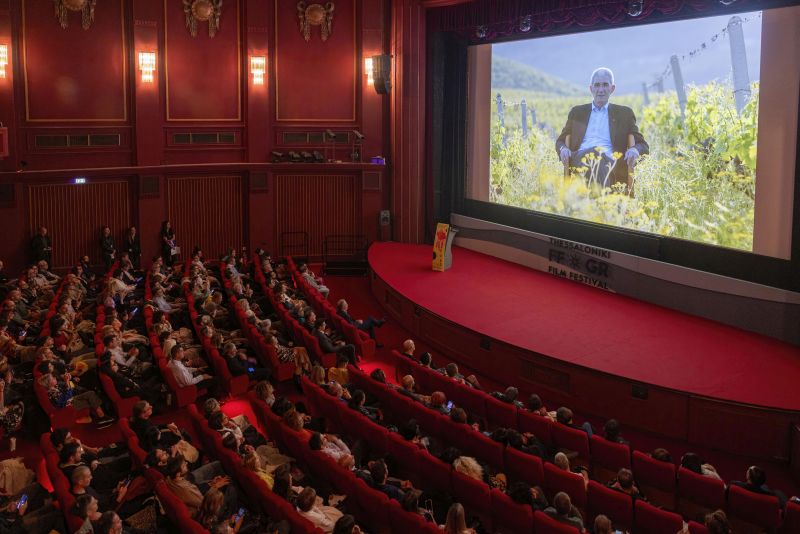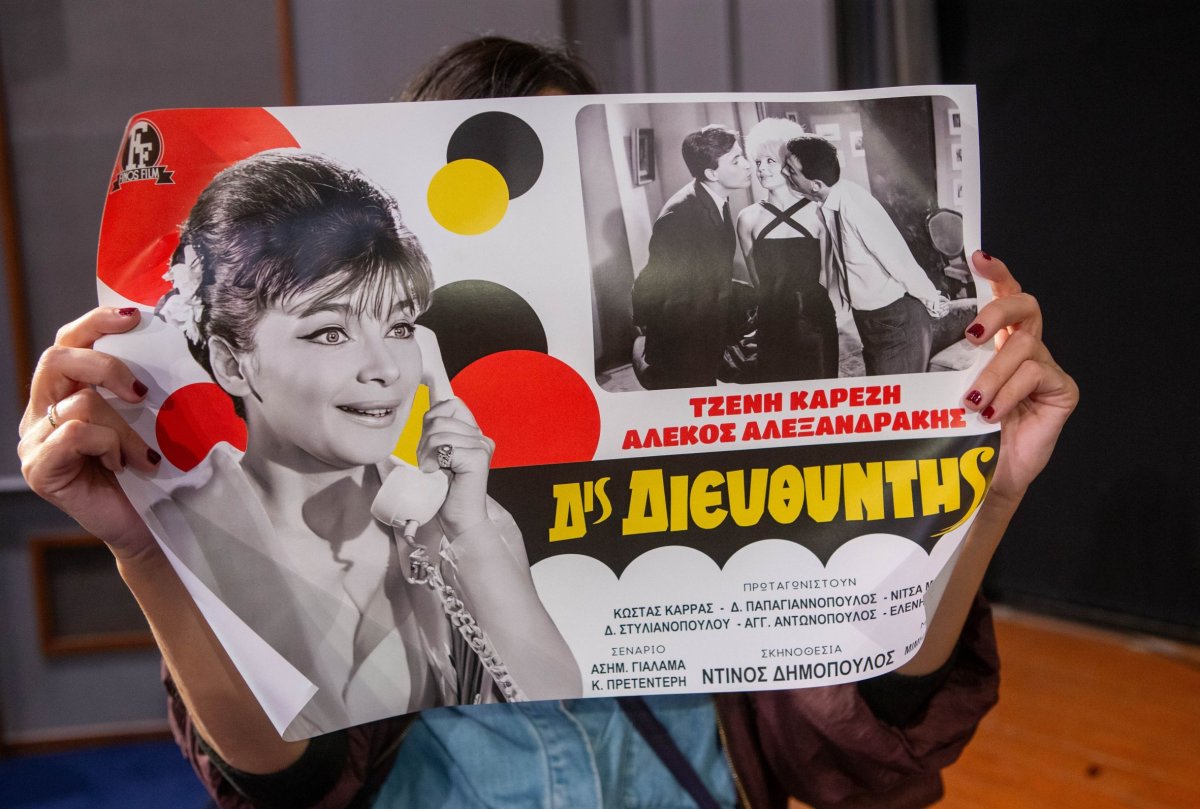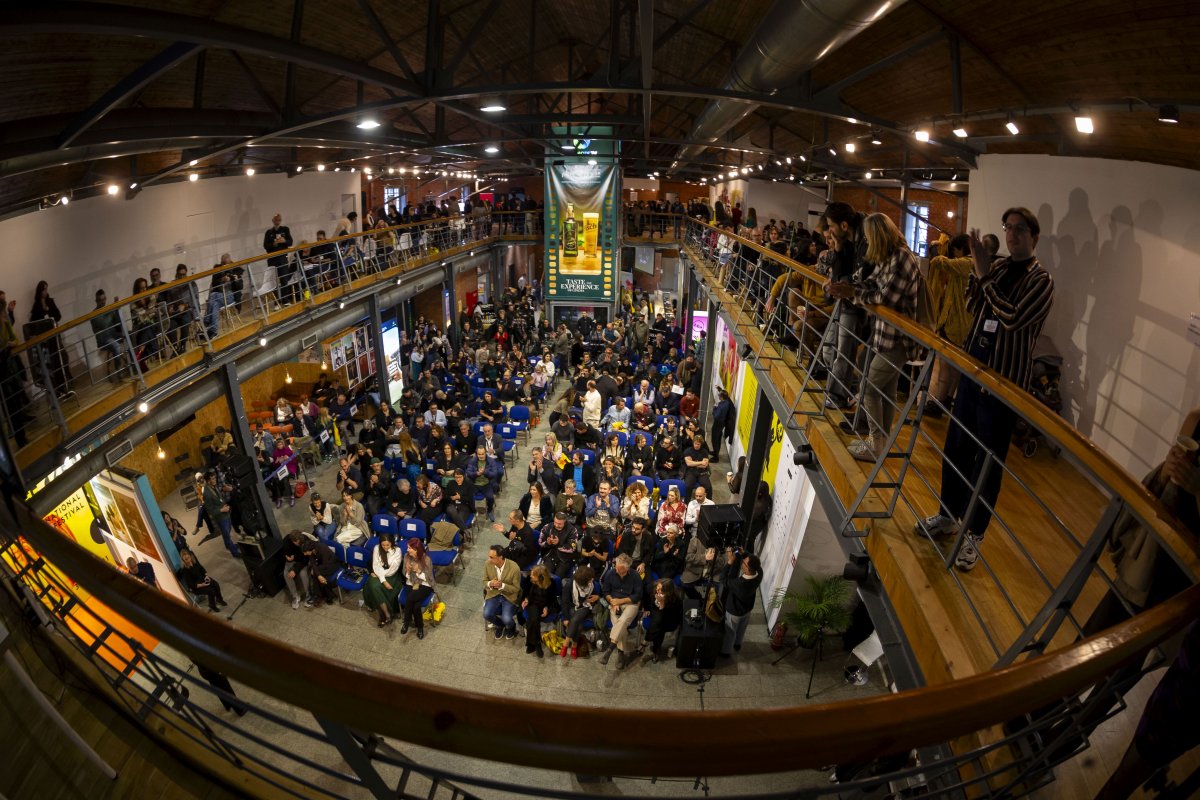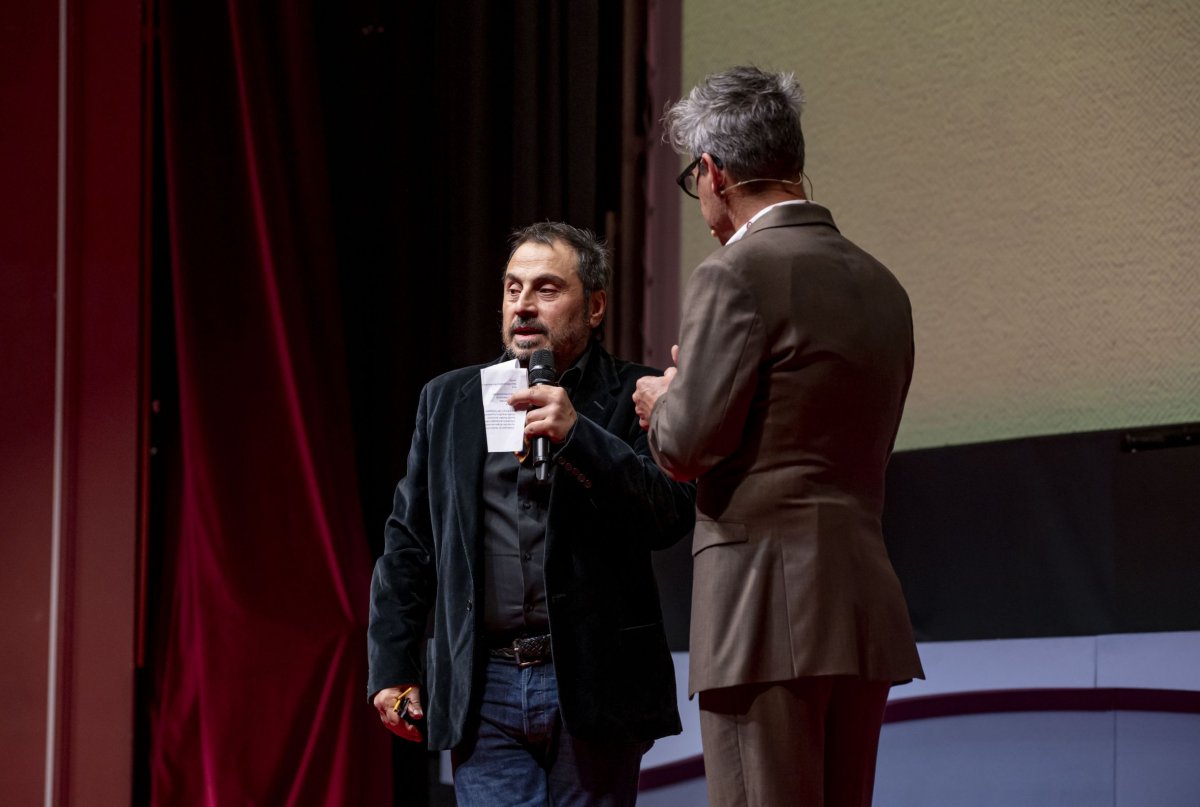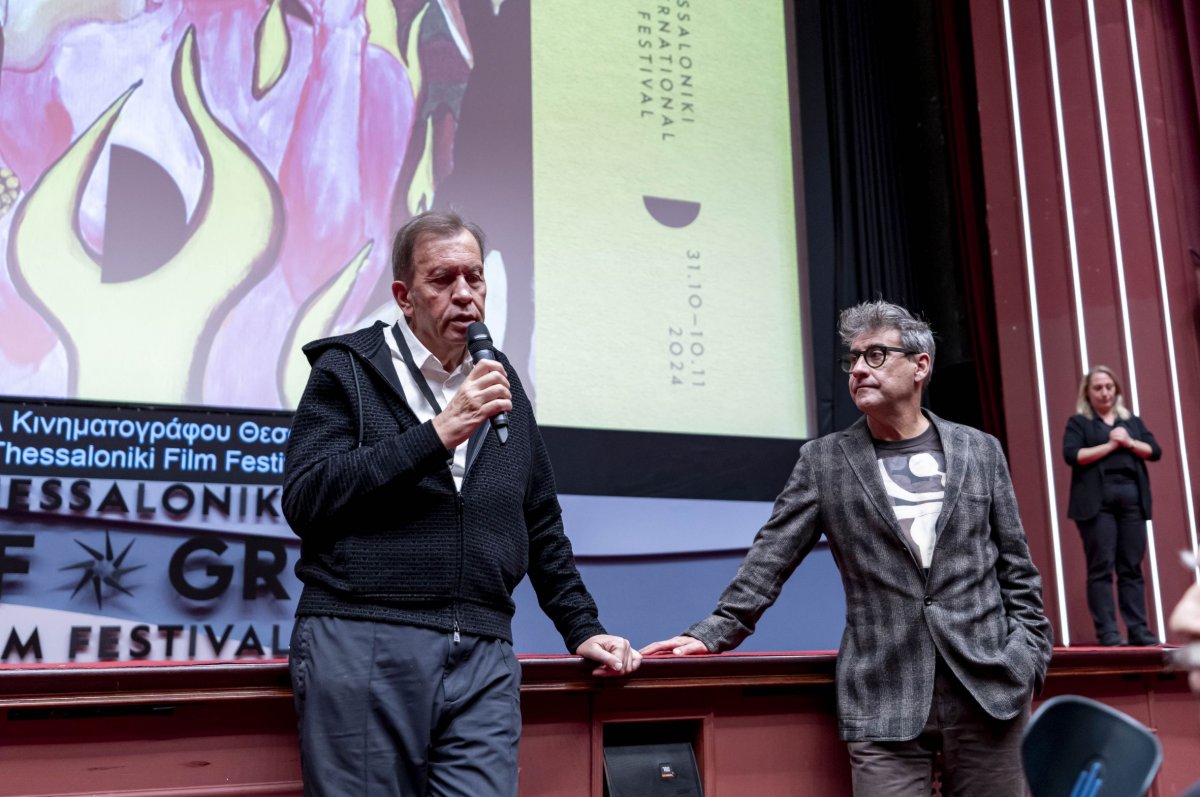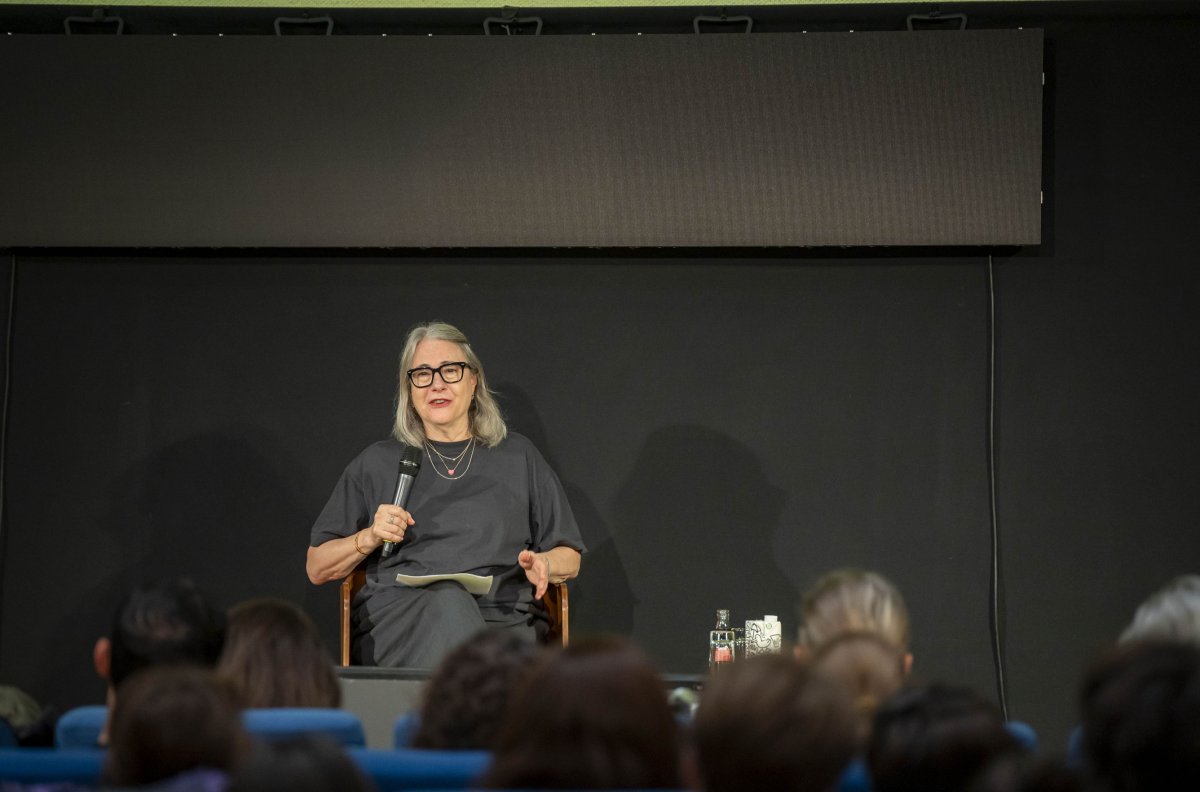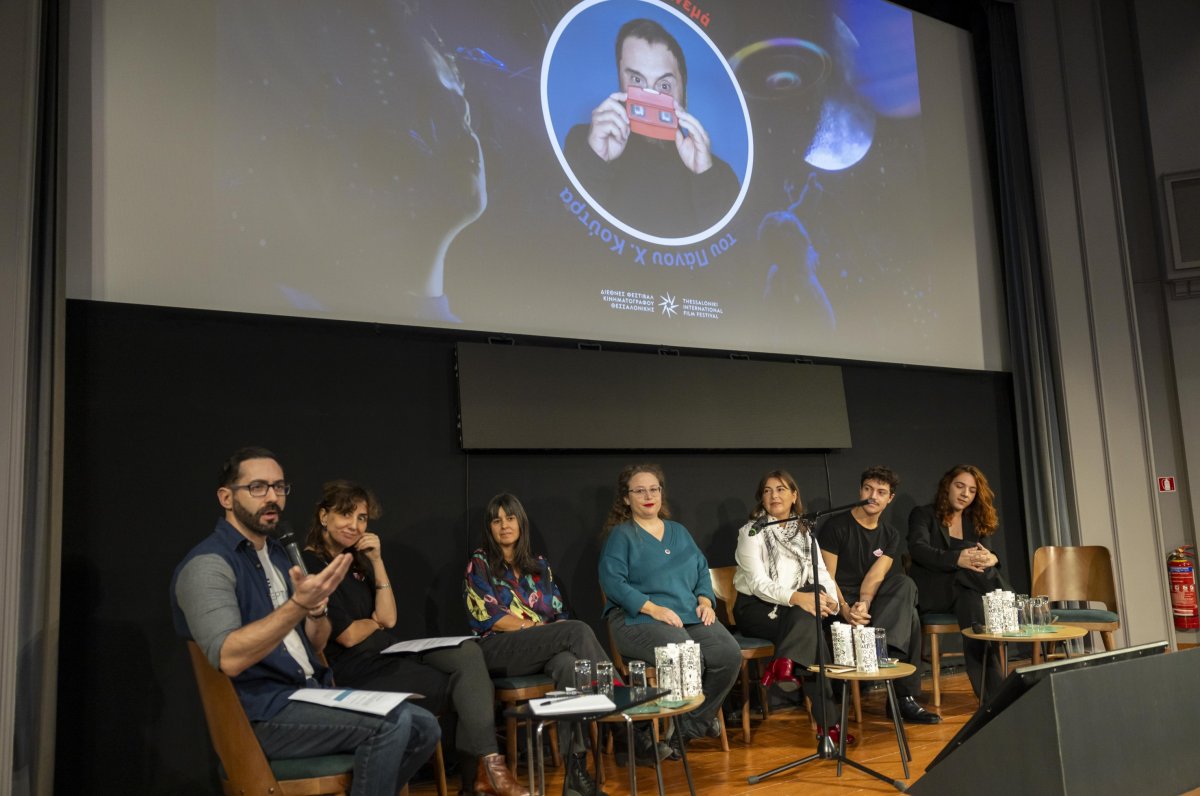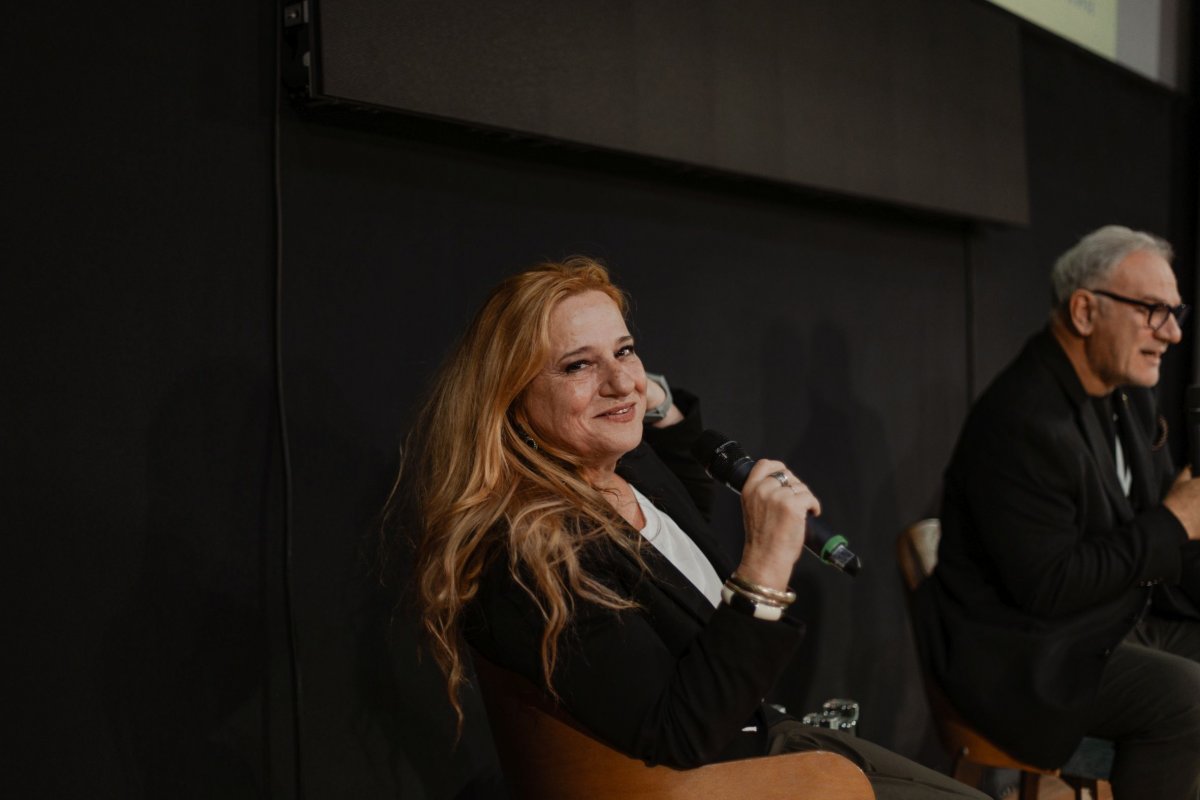Press Conference
As part of the 17th Thessaloniki Documentary Festival, the directors Ase Svenheim Drivenes (I Am Kuba), Alicia Calderon Tores
(Portraits of a Search) and Miguel Silveira & Ehsan Ghoreishi (I Am a Visitor in your World) attended a press conference on Monday March 16, 2015.
Miguel Silveira spoke first. His documentary I Am a Visitor in your World tells the story of Rebecca Babcock, who was dignosed with hereditary colon cancer at the aged of 25. “Rebecca and I were very close. We went to film school together many years before she got sick. What I thought was the most interesting thing about the film was the way she was able to reinvent herself as a human being, who began to live in an online platform, almost like a parallel life, that was reproduced in the actual life that we shared”. Speaking about the audience’s reaction to the film, given that the subject of cancer continues to be taboo, Silveira said that the reactions of the audience in Thessaloniki were fantastic and that he answered many interesting questions after the film’s screening. The film’s co-creator Ehsan Ghoreishi was also present at the press conference. He told journalists: “I never had an experience this close to someone who was battling cancer, a terminal disease”. The film was a learning experience for everyone involved. Speaking about the film’s heroine, Ghoreishi explained: “Rebecca wasn’t just the subject of the film, but she co-wrote it. The limits weren’t clear at first. We came to realize that there was no such thing as a limit. You see things that are extremely graphic, but they are everyday procedures she filmed herself. For Rebecca these things weren’t shocking. They were part of her everyday life. How to translate that in a way the audience could begin to grasp? A lot of people around her always told her how inspiring she was. She always had a strong reaction to that. “I’m not inspiring”, she’d say”. When asked if Rebecca wanted to send a message to others suffering from cancer, the director noted: “Rebecca didn’t want to be a role model for others suffering from cancer, but she definitely wanted to tell her story. The film’s theme is personal and philosophical at the same time. Rebecca’s mother is also present at the Thessaloniki Documentary Festival, to tell her daughter’s story and to help others suffering from cancer. In these matters the balance is very delicate”.
Ase Svenheim Drivenes’ I Am Kuba presents the life of a 12 year-old boy from Poland, whose parents moved abroad to find work, while he takes on additional responsibilities of looking after his younger brother. “Kuba’s story is the story of thousands of children in Eastern Europe today. They are children that don’t live with their parents, but rather are looked after by neighbors, relatives and friends of the family”, the director explained. “We had meetings with the school regularly. The school knew about the situation. The mother was struggling to get a legal guardian for them, but it wasn’t easy. In my opinion, Kuba’s school didn’t recognize the problem. They threatened the boy and his mother. They said that they had many children with the same problem and didn’t recognize this is a social issue, but rather considered Kuba a troubled boy.” Today the two boys are doing well and have been reunited with their mother. They now live in Vienna. “I talk with Kuba weekly. Things are going much better and Kuba is getting great results in school” the director added.
Alicia Calderon Torres’ Portraits of a Search presents the story of three women trying to find their missing children in the difficult circumstances of an undeclared war fought against drug lords that have forced many mothers into this position. “There are 26,000 missing persons in the country. This is a shocking reality“, the directed pointed out. Regarding the three women the director chose as heroines, she noted: “The three mothers I chose for the film represent three different kinds of people: one of them lives in a village, another in a big city and the third has the means at her disposal to search for her child”. Talking about the different way that journalists and documentary filmmakers approach this difficult issue, Calderon Torres characteristically explained that “journalists operate under very difficult circumstances. There is a lot of fear because it is such a difficult topic, and this affects the freedom of reporting.” The director said that she was tired of the way journalists usually dealt with the issue, adding: “In my film I had the freedom to deal with this issue in a more subjective way, through these mothers. In the end, I realized that this was what I wanted to do, and I abandoned the journalistic approach”. The director has kept in contact with the film’s three heroines. “The first one lives in a small village, and is suffocating from the harsh stigma attached to the mothers of the disappeared. Many people have to relocate because of the pressures of the war on drugs. The second mother we see in the film is now an active member of a NGO that protects the families of disappeared children, while the third works for the government, and contributes to investigations for the location of the disappeared.”



